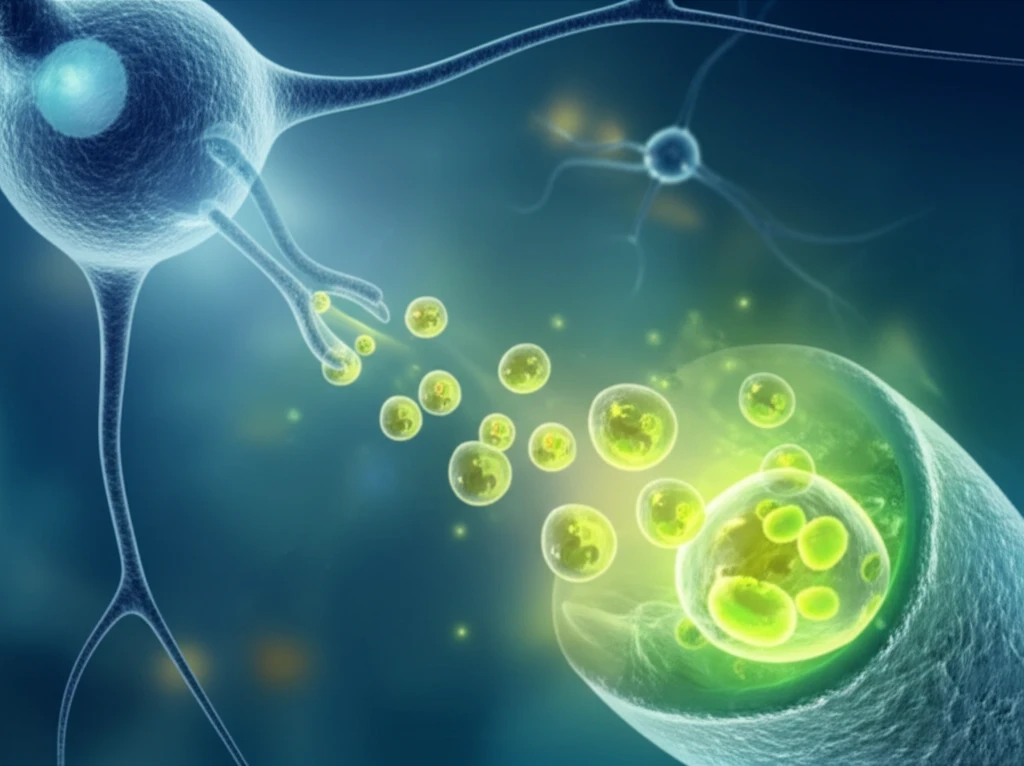
Unlocking Memory: How Acidic Brain Cells Hold the Key to Learning
"New research reveals the surprising role of acidic calcium stores in neurons, offering potential breakthroughs for treating cognitive disorders."
Our brains are powerhouses of activity, constantly rewiring connections as we learn and remember. At the heart of this process is glutamate, a key neurotransmitter that excites neurons and sets off a cascade of signals. Understanding how glutamate works is crucial for unraveling the mysteries of memory and finding new ways to treat cognitive decline.
Scientists have long known that metabotropic glutamate receptors (mGluRs) play a vital role. These receptors, activated by glutamate, trigger the release of calcium ions (Ca2+) within cells. This calcium release was traditionally thought to originate from a cellular structure called the endoplasmic reticulum (ER). However, recent research is uncovering a more complex picture, highlighting the importance of "acidic Ca2+ stores."
A new study by Foster et al. sheds light on these acidic Ca2+ stores and their unexpected role in long-term potentiation (LTP), a process crucial for strengthening connections between neurons and forming memories. This article will explore their findings and discuss the implications for our understanding of brain function and potential therapeutic interventions.
The Acidic Side of Memory: Unveiling NAADP's Role

Acidic Ca2+ stores are a diverse group of organelles, including lysosomes, that maintain a highly acidic environment and store calcium. These stores communicate with the rest of the cell through the Ca2+-mobilizing messenger nicotinic acid adenine dinucleotide phosphate (NAADP) and two-pore channels (TPCs). Although scientists have observed NAADP's involvement in various neuronal processes, its specific role in learning and memory has remained elusive – until now.
- NAADP Activation: When mGluR1 is stimulated, it triggers the release of NAADP.
- Acidic Store Release: NAADP then acts on TPCs located on acidic Ca2+ stores, causing them to release calcium.
- RyR Involvement: This calcium release, in turn, activates ryanodine receptors (RyRs) on the ER, leading to further calcium release.
- Depolarization: The combined effect of these calcium releases leads to depolarization, a change in the neuron's electrical potential that is essential for LTP.
Future Directions: Targeting Acidic Calcium Stores for Cognitive Enhancement
The study also highlights the role of small conductance calcium-activated potassium (SK) channels in regulating neuronal excitability. The researchers propose that after calcium release from acidic stores, a phosphatase called PP2A inhibits SK channels, leading to further depolarization. This part is still speculative but a new target of research.
These findings have significant implications for understanding and treating cognitive disorders. Lysosomal dysfunction, which affects acidic Ca2+ stores, is increasingly implicated in neuronal dysfunction and diseases like Alzheimer's. By understanding how NAADP and acidic Ca2+ stores contribute to synaptic plasticity, we may be able to develop targeted therapies to enhance cognitive function and combat neurodegenerative diseases.
The work of Foster et al. opens new avenues for research and provides a compelling case for considering acidic Ca2+ stores as key players in neuronal signaling and synaptic plasticity. As we continue to unravel the complexities of the brain, these discoveries may pave the way for novel treatments that improve the lives of individuals affected by cognitive impairments.
